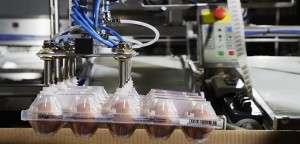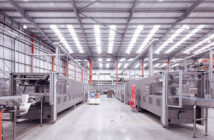
There’s an old saying that you can’t make an omelette without breaking a few eggs.
There’s an old saying that you can’t make an omelette without breaking a few eggs.
However, people in the New Zealand food processing industry know that mistakes on the production line can be costly. Millions of dollars is spent every year trying to prevent or fix problems related to contamination, labelling, injury, sanitation and wasted raw ingredients.
Increasing automation in the workplace can significantly help reduce many of these issues, with the newest generation of technologies such as lightweight robots capable of improving processes for food manufacturers.
A good example is the reduction in contamination through reduced handling of raw materials. Microbial contamination is the leading cause of food product recall, accounting for around 35 per cent of all instances in New Zealand[[1]].
These microscopic problems come with a massive price tag. The payments to supermarkets and penalties from regulators for product recalls often run over $100,000, while manufacturers of popular products can expect costs of up to $2 million[[2]].
Recently an ice-cream product line contaminated with Listeria was found responsible for several deaths and a nationwide recall in the United States. The bacteria are one of many that can be transmitted by factory workers[[3]].
Lightweight robots reduce handling of foodstuffs and are designed with sanitation in mind. Tasks such as packing and labelling can be completed without the need for physical contact between the factory worker and the products.
Unlike traditional industrial robots, the new generation of lightweight robots are easily cleaned with a hose-down proof design and are made to be sterilized. Interchangeable grippers further reduce the risk of contamination, with many being specifically built for food handling.
Another pricey mistake for many food producers are labelling mistakes. Between 2002 and 2011, 33 per cent of all food recalls in ANZ were due to errors in labelling, with around 15-20 instances occurring across the region over the course of a year[[4]].
The fast moving nature of the NZ food industry means labelling mistakes are an ever present danger. Manufacturers often have to make quick changes to the line, which increase the likelihood of products being shipped with wrong date codes or incomplete information.
It’s here that lightweight robots offer a number of solutions. Like any good automated worker, they’re great at repetitive tasks and mean jobs can be redone quickly. Staff can then be more focused on quality control – such as ensuring correct labelling – rather than getting caught up in the arduous task of applying the labelling.
The freeing up of employees from repetitive tasks can also help reduce costs related to worker accident and injury. This is a significant problem for all food manufacturers. In the United States as many as 65 percent of all food factory workers had experienced injury while working on the job[[5]].
Costs related to worker injury are considerable. In addition to injury pay, they can also have a direct impact on insurance premiums, lost labour and production interruption – as well as the distress of a valued team member.
Lightweight robots now have many built-in features to ensure they can work safely side-by-side with factory workers. In addition to repetitive tasks, the collaborative nature of these robots mean they’re also able to reduce heavy lifting often associated with food production.
Most robots have highly configurable safety modes that will instantly respond to a wide range of triggers. This means that around 80 per cent of these devices are deployed without safety guarding (after risk assessment)[[6]].
Perhaps the greatest advantage of automating the production line, however, is overall quality control.
Lightweight robotic stations can be continually monitored by the production manager, who can change the production process, the packaging label, and the quantity according to customer needs. If a production line is unstable and there’s a poor quality product output, raw materials can be wasted. With robots, the technology ensures consistency and a high quality product output, which will significantly reduce the amount of raw materials that are wasted.
In fact, it’s through this approach that the omelette and broken egg analogy can be truly put to bed.
Universal Robots works with one of Europe’s biggest egg companies to help pack more than 15,000 eggs an hour. Cascina Italia uses four lightweight robots on its packaging lines to handle products for large-scale distribution. The networked approach means the company can quickly configure more than 220 product options, in different formats, all with minimal mistakes and risks.
Mistakes in food processing are a real concern for many New Zealand companies. However the introduction of these new technologies, such as the approach taken by Cascina, can help overcome many of these potential hazards.
[[1]] www.ausfoodnews.com.au/2015/06/24/how-to-avoid-costly-product-recalls.html
[[2] ]www.ausfoodnews.com.au/2015/06/24/how-to-avoid-costly-product-recalls.html
[[3]] www.cdc.gov/listeria/outbreaks/ice-cream-03-15/
[[4] ]www.foodstream.com.au/labelling-mistakes-can-lead-to-food-recalls/
[[5] ]www.foodmanufacturing.com/blogs/2012/07/hidden-cost-cheap-labor
[[6]] http://www.universal-robots.com/en/products/ur-robot-benefits/
By Shermine Gotfredsen, general manager Universal Robots, APAC




























































































